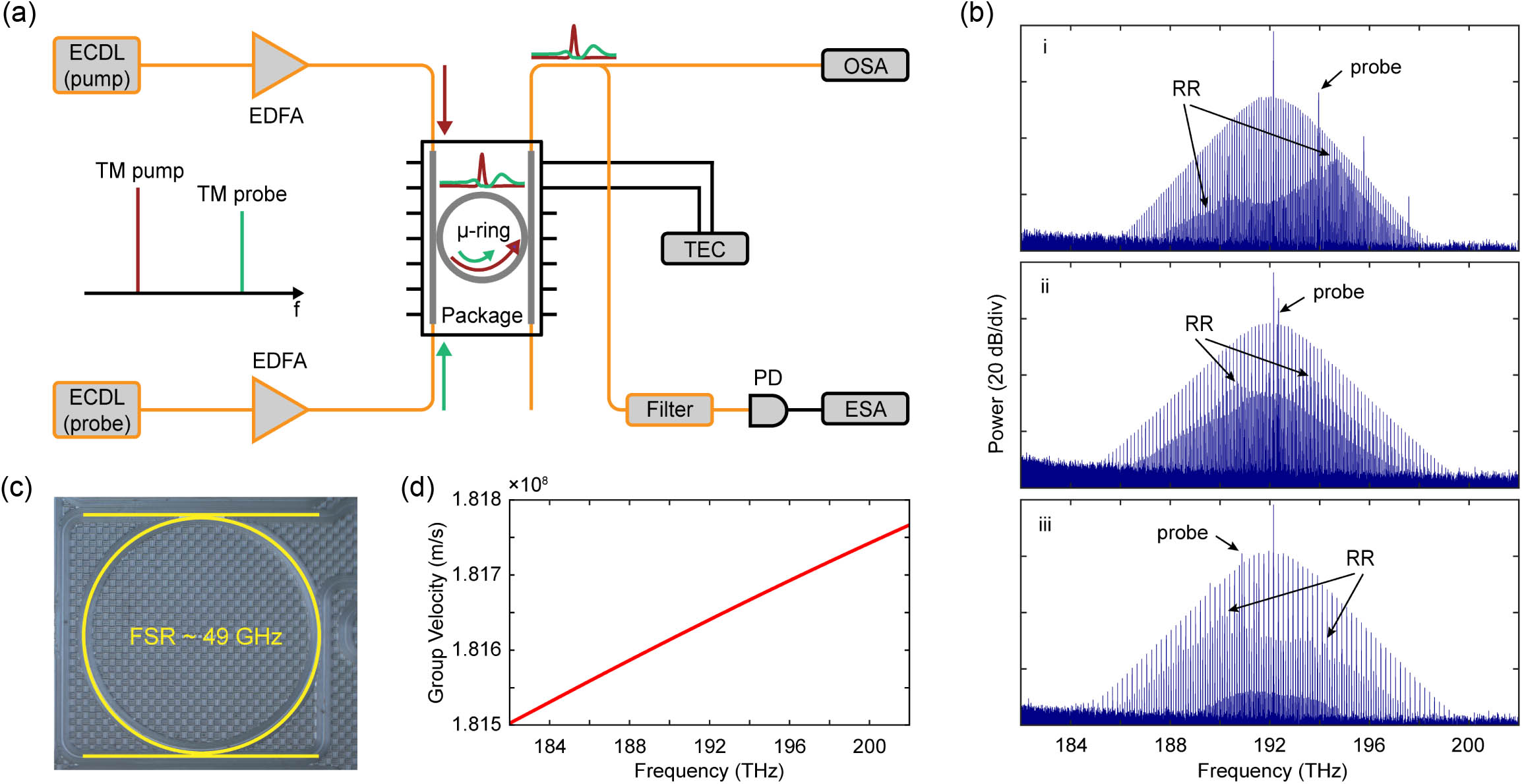Yang Wang, Weiqiang Wang, Zhizhou Lu, Xinyu Wang, Long Huang, Brent E. Little, Sai T. Chu, Wei Zhao, Wenfu Zhang, "Hyperbolic resonant radiation of concomitant microcombs induced by cross-phase modulation," Photonics Res. 11, 1075 (2023)
Search by keywords or author
- Photonics Research
- Vol. 11, Issue 6, 1075 (2023)

Fig. 1. CMC optical field evolution with walk-off parameter. A nonlinear phase shift is added to the probe field (red line). The optimal phase matching frequencies have maximum modulation instability gain, which forms RRs. For a micro-resonator with a standard parabolic dispersion curve, the walk-off parameter d p a d p a | d p a |

Fig. 2. Experimental setup and results. (a) Schematic diagram of the experimental setup. (b) Measured optical spectra when the probe field has slower, similar, and faster group velocity, where the SMCs are used as pump for CMC generation. (c) Top view of MRR. (d) Calculated group velocity of the MRR.
Fig. 3. Temporal and spectral characteristics of CMC. (a)–(c) Calculated waveforms and spectra of CMC when d p a
Fig. 4. Spectral characteristic of CMC. (a) and (b) show the optical spectral evolution along with d p a d p a 2.0 × 10 − 12 0.5 × 10 − 12 − 0.5 × 10 − 12 − 2.0 × 10 − 12 s / m
Fig. 5. Steady-state characteristics of the CMC. (a) Steady-state pump pulse (soliton pulse). (b) Frequency chirps induced by pump pulse by XPM effect. (c) Temporal waveform of steady-state CMC. (d) Optical spectrum of steady-state CMC. The modulated spectral envelope is caused by the constructive or destructive interference.
Fig. 6. Effect of GVD and GVM on probe field. (a), (c), (e), (g) are the temporal domain distribution of pump field and probe field, and (b), (d), (f), (h) are the spectra of probe field. In (a), (b), (e), (f), the pump field is a noisy CW, and in (c), (d), (g), (h), the pump field is an SMC. In (a)–(d), only GVD effect is considered, and in (e)–(h), both GVD and GVM effects are considered simultaneously.
Fig. 7. Influence of GVD and GVM effects on XPM. (a) and (b) show the waterfall diagram of the spectrum of the probe field, which takes the wavelength of probe and pump light as the reference, respectively, where the black solid line represents the RR position.

Set citation alerts for the article
Please enter your email address



